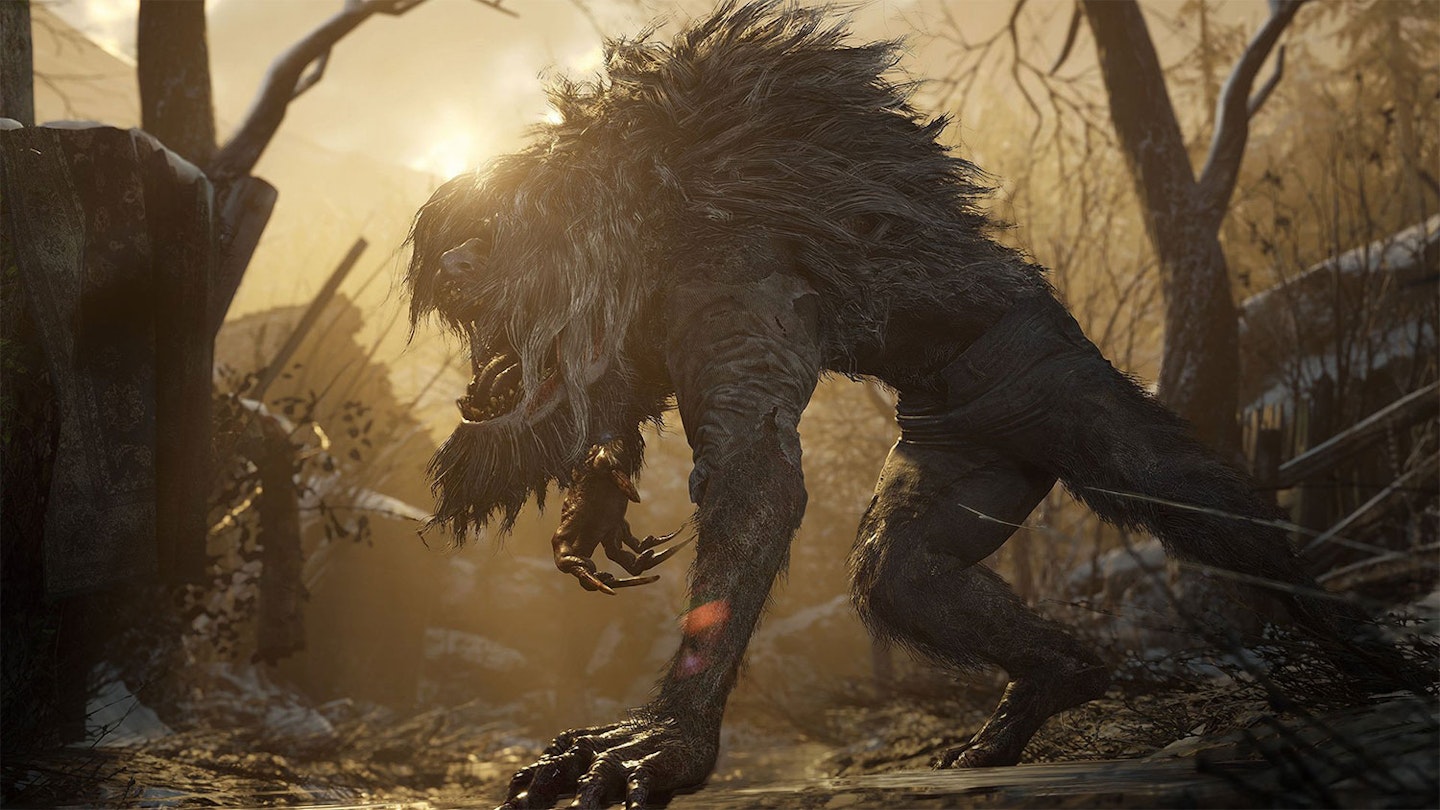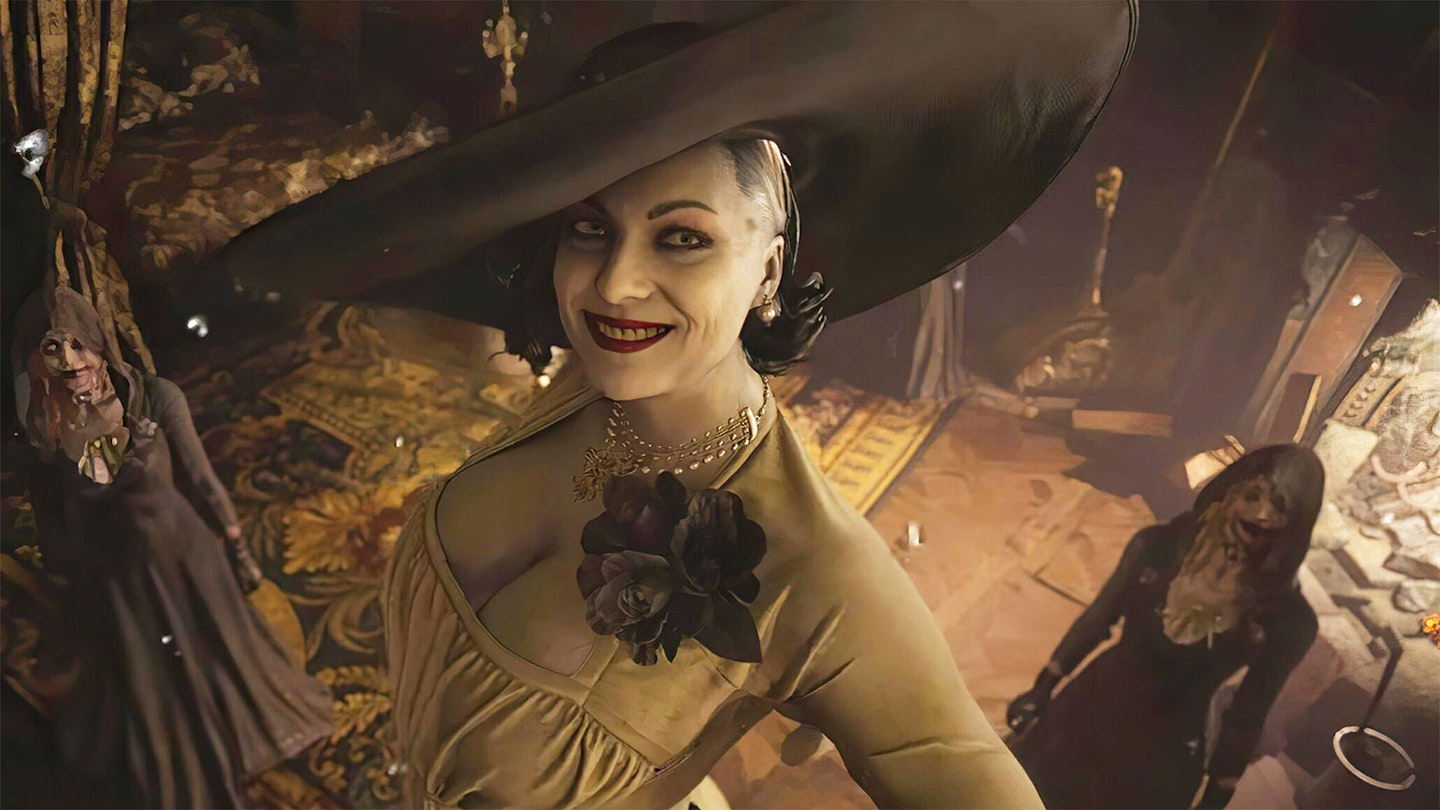Platforms: PS4, PS5, Xbox One, Xbox Series X|S, PC
As Bart Simpson once exclaimed, “Rocky V plus Rocky II equals... Rocky VII!" It seems Capcom has followed the same sequel formula as Springfield's favourite son, because Resident Evil 4 plus Resident Evil 7 equals – in defiance of mathematics – Resident Evil Village, the eighth main instalment in the storied horror franchise. Or tenth, counting Zero and Code: Veronica. OK, maybe maths isn't a pre-requisite to understanding Village’s charms, but playing it definitely feels like a mash-up. From RE7’s first-person perspective, gifting the game a more immersive, horrifying experience, to RE4’s creepy European village setting and its approach to inventory management, it's hard to escape the sense that Capcom wanted to combine the highlights of two of its best-received entries in the series.
_Resident Evil Village_ may, for long term players of the franchise, feel more like a Best Of album
Picking up three years after Resident Evil 7, Village returns protagonist Ethan Winters, now living in a remote Romanian village far from the Louisiana hell he rescued wife Mia from. An idyllic life beckons, with the couple having recently welcomed daughter Rose to the world – until series stalwart Chris Redfield storms their new home, guns down Mia, and captures Rose and Ethan. At some point after being knocked unconscious by the friendly end of an assault rifle and dragged into a convoy, Ethan awakens in the blood-stained snow, the only survivor of an attack by something in the darkness.
Drawn into the eponymous village, Ethan finds himself embroiled in another nightmare situation, one that both echoes and deviates from the last. The theme of family-as-horror returns, swapping the horrifying Baker clan for the instantly iconic Lady Dimitrescu – aka Large Vampire Lady, who the whole internet seems disconcertingly horny for – and her distressing daughters, Bela, Cassandra, and Daniela. However, where RE7 tapped into Texas Chainsaw Massacre-style horror, Village hovers somewhere between 'classic' and 'camp', with monsters and an internal mythology inspired more by traditional werewolves, vampires, bogbeasts, and other such folklore.

Dimitrescu herself doesn't get quite as much of a showcase as the pre-release marketing may have you believe, but the times you do encounter her – particularly a lengthy section in her appropriately foreboding castle, looming over the decrepit village – leave a powerful impression. Stalking and taunting you through ornate corridors, pairing a designer gown with a nailjob courtesy of Lady Deathstrike's manicurist, she's immediately one of Resident Evil’s standout villains.
Elsewhere though, Village takes a step back from RE7’s resurgent survival horror, retreating towards RE4’s emphasis on action. The sprawling township offers more diversity of enemies than its predecessor, but despite the ability to blockade doors and otherwise hide, shooting down grunts is typically an easier, more satisfying option than evading them. Coupled with a reasonably prolific arsenal of weapons and a relatively sustainable ammo supply, and you'll typically feel up to confronting the terrors Village throws up.
Sandwiched in between the action and horror though is the series' array of puzzles. In the larger labyrinth of the village, these could easily fall into the trap of being pointless treks back and forth, but instead manage to deliver an immense sense of satisfaction. Realising the macguffin you've just found opens up the gate you found half an hour ago, unlocking a new area of the village to explore, feels thrilling.
Perhaps "mash-up" is unfair – Resident Evil Village may, for long term players of the franchise, feel more like a Best Of album, combining the series' biggest hits into a fulfilling but familiar new tracklist. It never quite manages to recreate the stultifying horror of RE7, but continues the trajectory from the last game, while delivering gameplay that's a bit faster and more empowering by channelling another of the series' high points. Whatever the math, Village is at least the sum of its parts, if not slightly greater.
